Open Spaces Open Hearts

Public space in the city provides exercise and discovery, a chance to commune with nature and neighbours. Landscape architects are addressing human needs in their designs, lifting citizens’ spirits with their clever eye for sustainability, smart technology and authenticity.
While the architects of striking structures that soar skywards have long been at the pinnacle of the profession, those who set their sights and employ their skills at ground-level are now enjoying equal footing and respect. The current drive for a greener and more active lifestyle has cast the spotlight on landscape architects, who are trained to see the bigger – or wider – picture. As designers of the urban landscape, they are charged with making the environment beyond our front door or office more attractive and more sustainable. They are “the profession most able to synthesise the many different systems that make a city work,” said Martha Schwartz, one of the leading lights in the field. Bridging the gap between urban and natural, and determining how we interact with our environment, they shape our cities, and therefore our enjoyment of modern life.
Schwartz suggests that people are no longer so interested in building iconic buildings: “[Instead] they’re trying to figure out how to fix, expand, shrink or build their city.” Landscape architects are in demand and their role is vital, not only in enhancing the physical cityscape but also in boosting the spirits of the people who dwell there. As Schwartz noted, there is “Much scientific evidence now that proves that the quality of our physical environment has psychological and emotional impacts upon us”. Shared open spaces are important, she believes, since they foster a “Sense of place, identity and belonging”. More than simply supplying space to sit out, stroll or exercise, they promote social interaction and cohesion and affirm citizens’ shared rights to the place where they live – all essential to an individual’s sense of wellbeing. In a study conducted by the UK Commission for Architecture and the Built Environment, 91 per cent of people said that the provision of public parks and open spaces improved their quality of life.

|
The first task for designers is to attract city dwellers to the open space; the second is to provide an environment there which makes people feel good about themselves, their fellow citizens and their city. “There is a sort of general view that landscape architecture is simply about beautification or scenic improvement – about making places look better,” argued James Corner, the landscape architeect best known for his iconic High Line, in a 2016 interview. “How places look and how they feel is quite fundamental, but more than that it is the creation of settings for everyday life, settings that help to dramatise and enliven everyday life. These spaces should instigate particular types of sociability. By creating a space that is generous and inviting, you’re establishing the right sentiment for people to come and feel that they are welcome there. Only then can they begin to take part in the activities in the space.” Like all James Corner Field Operations’ projects, the renovation of the Tsim Sha Tsui waterfront as part of New World Development’s Victoria Dockside reflects the specific nuances of the local environment and is rooted in culture, place and time. Corner told Design Boom that Hong Kong’s subtropical climate with searing heat, humidity and susceptibility to typhoons, as well as the need to open up dramatic views of the water and the skyline in such a densely populated city, had informed the design. Improved access to the waterfront and increased shading under a series of greenery-draped awnings will offer a more relaxed experience for Hong Kong’s harried inhabitants when the waterfront reopens in 2019. Being gifted a more user-friendly space in which to socialise, unwind and appreciate the beauty of the harbour will foster a sense of community and public empowerment. “It’s a challenge [in a long linear space] to accommodate large crowds of people while maintaining a gracious sense of space, but we have focused on prioritising views out to the city and providing distinctive areas for sitting and watching the theatre of the city along the way,” said Corner of his first Hong Kong project. |
At High Line Park in New York City, Corner turned a derelict elevated railway spur into a city asset with the added value of authenticity. Originally there had been talk of pulling down the track, but regenerating these familiar Lower West Side structures - used for decades by commuters - into an overhead park builds instead on the history of the place and the shared public memory. It provides a green breathing space in, and views of, the city, is a place of relaxation and a means of connecting with the community. The neighbourhood is revitalised for its citizens, emotionally and economically, as it becomes a more desirable place to visit and live. Nature now thrives in High Line Park, but it was a difficult environment in which to build a green landscape. Corner sourced stress-tolerant plants from other hostile environments that could flourish in the harsh New York climate and the structure’s shallow soil. Paving was purposely designed to crack so plants could come through and to collect, store and facilitate the reuse of rainwater. All materials used in the project were either recycled or from sustainable sources. Corner added that “We wanted to make sure that every detail from the paths to seating, down to the trash cans, lighting and water features would make this a generous, safe and secure space, but also give people the feeling that they’ve come across a secret, magic garden in the sky.” The designer of the new shared space elaborated on the human joys it would promote: “I don’t think you can ever determine what people will feel, how they will emote or what they will experience [in public space]. But what I do hope is that … [at High Line people will] experience the delight of finding things. There are nooks, crannies and hideaways. There are vistas and vantage points… There are amazing discoveries to be made and if people come up here and find delight in that, then I think we’ve succeeded [as designers].” |
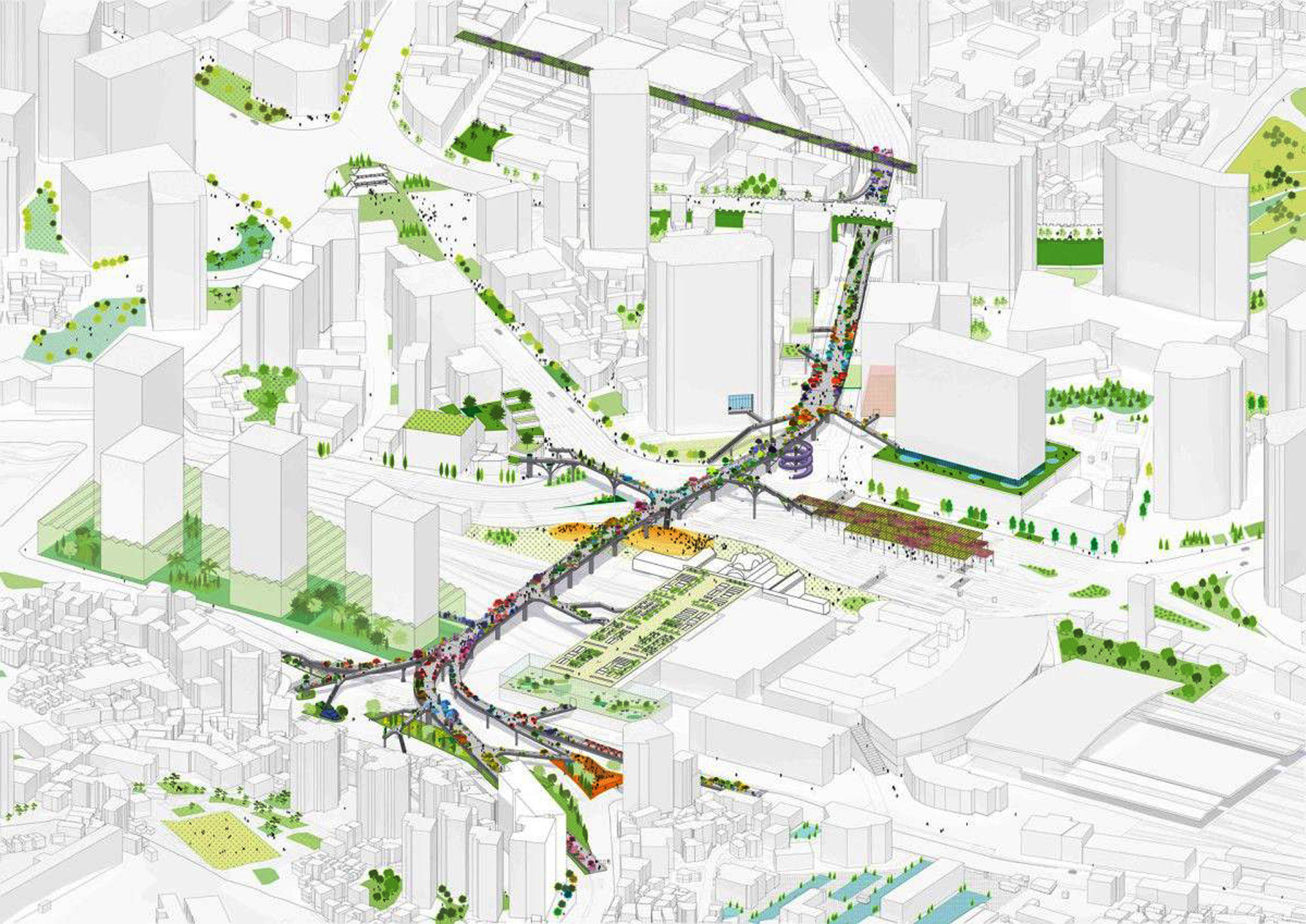
|
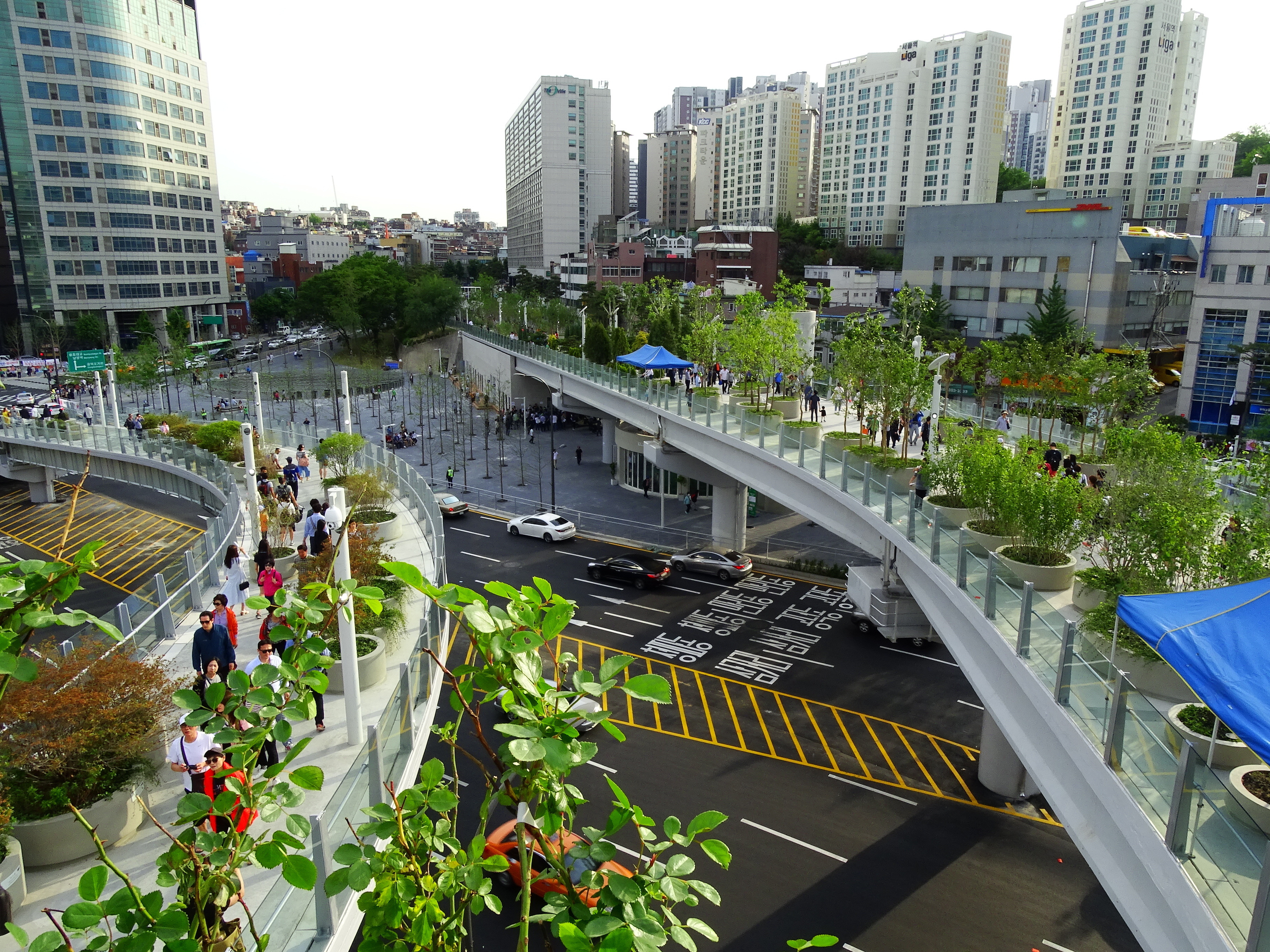
|
The human need for spaces to think, discover and reflect in, as well as find exercise, activity and amusement, has led to the design of other green corridors above the urban jungle. For the renewal of the Sants railway corridor in Barcelona, which had previously cut an ugly, divisive swathe through the district, architects Sergi Godia and Ana Molino partially glazed the existing structure and created embankments that support pedestrian ramps; vegetation spills down from the rooftop park. The elevated park will extend five kilometres with lawns, tree groves, shrubs and ground cover, immersing citizens in a natural environment and promoting a sense of comfort and wellbeing. In Seoul, architects MVRDV and landscape architect Ben Kuipers similarly worked in harmony with the environment, bringing a “Living dictionary of the natural heritage of South Korea” to the Seoullo Skygarden. A 938-metre overpass built in the 1970s is now an urban nursery of local flora while providing plenty of human diversions: cafes, shops, exhibition space and exercise opportunities. The park was designed as a linear collection of individual gardens, each with its own identity according to the seasons. This former polluted highway now engages citizens on a cultural and commercial level, raising levels of human interaction, fitness and happiness. |
LOOK Architects of Singapore has taken the raised green corridor principle up a notch in Fuzhou, China. The Jinniushan Trans-Urban Connector is a newly-built elevated steel walkway that provides citizens of Fujian’s capital easy access to forested hills along boardwalks, across overhead bridges and up spiral ramps. The construction footprint was minimised by a long span between supporting columns, thus conserving the existing ecology, and the use of steel grating underfoot affords natural light to the vegetation below. It is an example of how nature and an urban landscape designed to meet human recreational needs can coexist in harmony. It is also an eco route that embraces technology: an intelligent walkway network allows WiFi connectivity, touch-screen information boards and monitoring of visitor traffic.
“I love technology. It’s really transformed the kind of landscapes we can make,” said Mikyoung Kim in 2017. The Korean-American landscape designer is known for her understated blend of art, natural elements, innovative materials and high-tech touches in public spaces. See the natural stone sculpted wave forms at the Alexander Art Plaza in West Palm Beach and the stainless steel woven light columns that change colour with the wind in the Plaza at Boston’s Prudential Center.
Advances in digital technology have been changing the way people engage with the environment and each other at public spaces for 15 years; an initial spark was artist Jaume Plensa’s 50-foot-tall video-wall fountains in Chicago’s Millennium Park. New information and communication technologies (ICTs) increase engagement with the landscape, and thus the enjoyment of it, and enable architects and urban planners to acquire data to make shared spaces more human-friendly. Meanwhile, augmented reality, still in its infancy, promises to be a new plaything with unlimited possibilities for enhancing the public’s sense of place.
Low-tech human interaction with nature has been encouraged by high-tech construction in the coastal regeneration project at Bostanli in Karsiyaka on Turkey’s Gulf of Izmir. Studio Evren Basbug designed a set of cascading thermo-wood covered platforms on steel girders beside and over the water, inviting urbanites to lie back and soak up the warmth of the sun as it sets into the sea. Semi-permeable U-glass is used by Landau International Design for outside corridors at the Suzhou Vanke Great Lake Park in China, providing natural light, a sense of continuous space and cultural authenticity in this modern interpretation of a traditional Chinese garden. It is a serene space for citizens to seek reflection and find contentment.
The Public Square and Gardens at Hudson Yards, now under construction on Manhattan’s West Side, employs smart tech to achieve its sustainable goals. Landscape architect Nelson Byrd Woltz is planting 30,000 plants and 200 mature trees into “smart soil” on a steel platform above old railroad tracks. Jet engines will provide ventilation and rain will be collected in a 60,000-gallon irrigation system. As well as being soothed by greenery and a long, linear fountain, the public can explore Vessel, a 150-foot-high interactive art piece at the square’s centre. This sculptural shared space encompasses 154 flights of stairs, 2,500 steps and 80 landings to climb and enjoy. Designed by Heatherwick Studio, it will surely, and literally, lift people’s spirits. Martha Schwartz stresses that sustainability in the urban landscape is “Not only about technical or science-based systems; it enables what people think, feel and do… Beautiful [spaces], environments and cities create desirability and this desirability creates value [in which] people invest both economically and emotionally.” Through their careful blending of natural resources and modern technology and their emphasis on human-friendly designs, Schwartz and her fellow landscape architects are having a positive impact on everyday life. |
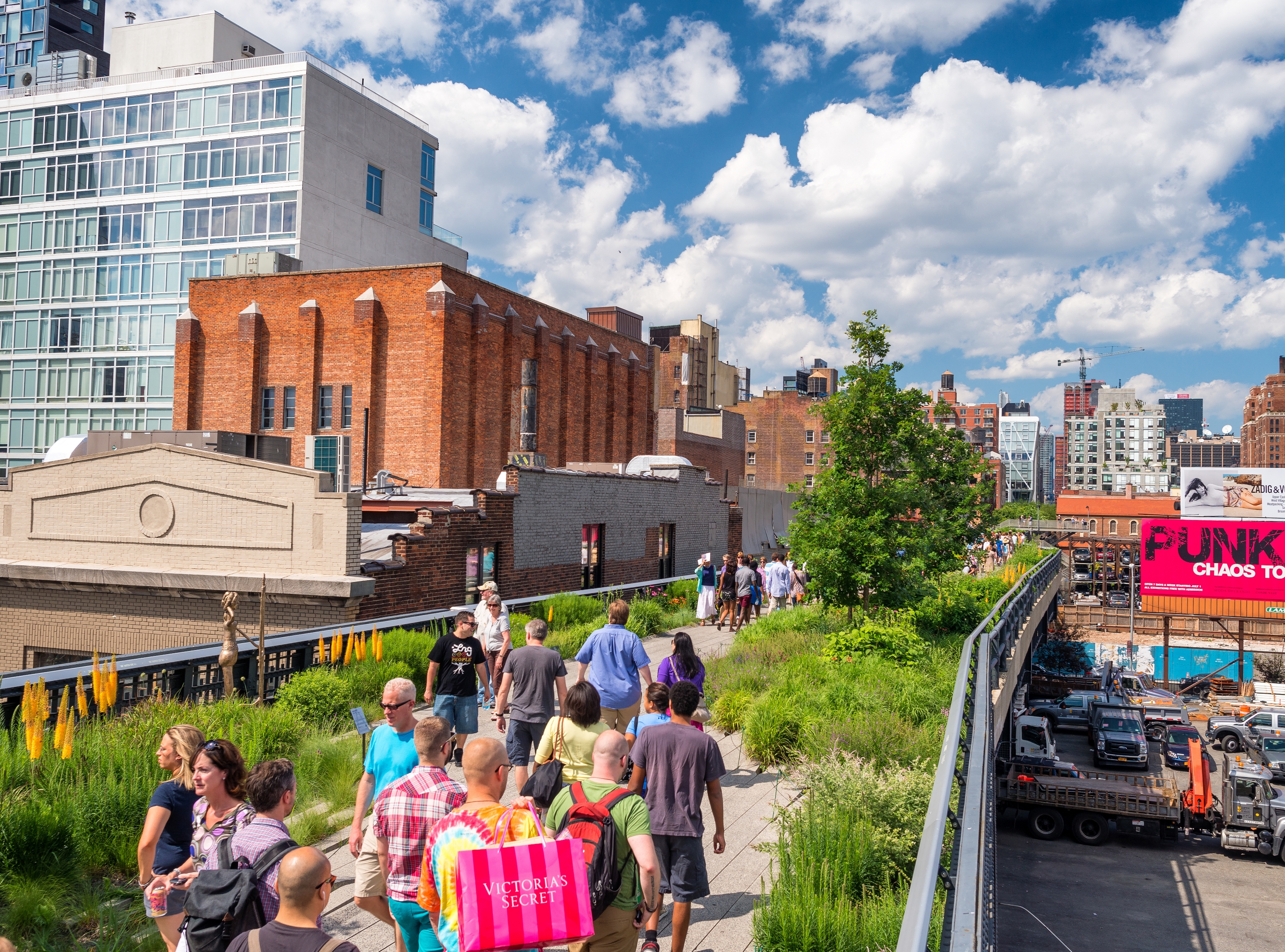
|
Others
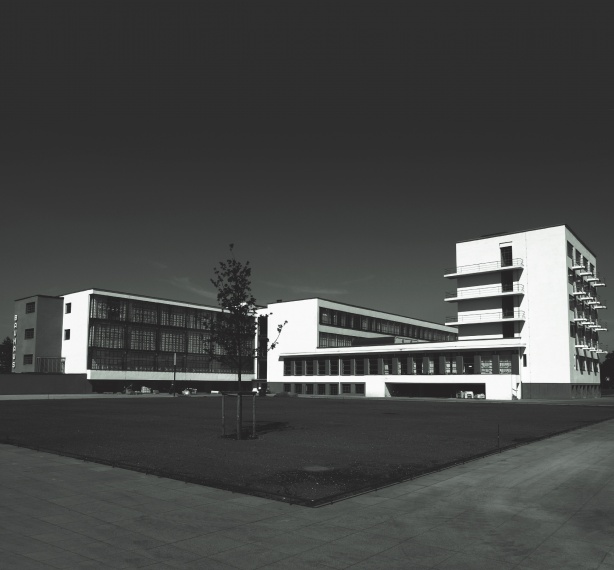
Latest News | 1 May 2018
The school of design that shaped the world we live in

Latest News | 1 May 2018
Virtually yours

Latest News | 1 May 2018
Homo Ex Data The natural o the artificial

Latest News | 1 May 2018
Me2B
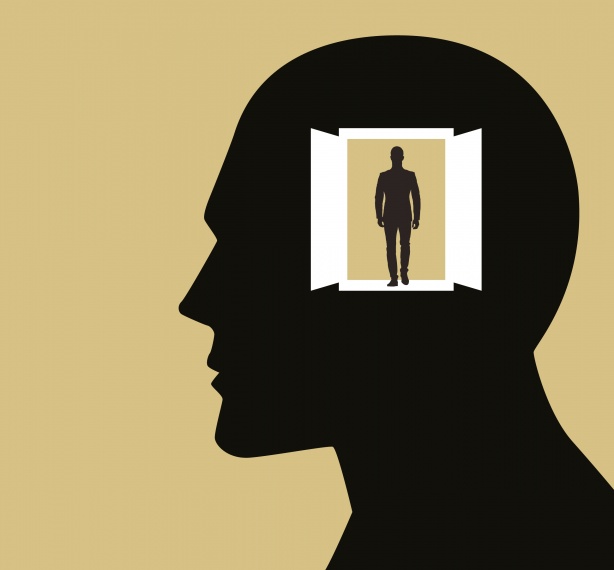
Latest News | 1 May 2018
Being Human

Latest News | 1 May 2018
Feeling AI

Latest News | 1 May 2018
Character building
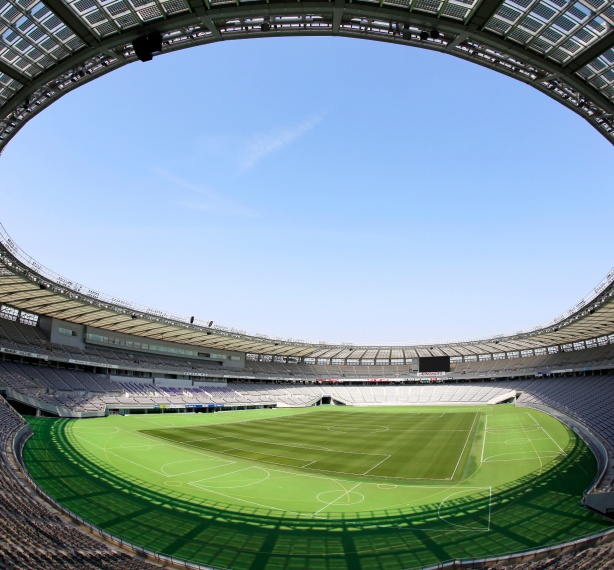
Latest News | 1 May 2018
Tokyo 20/20
